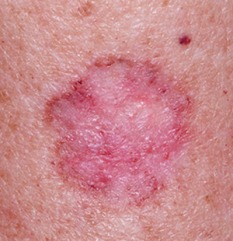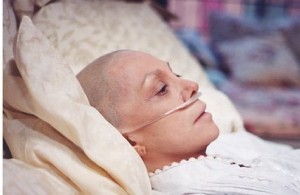Cancer condition that takes place in the skin is called skin cancer. It is because of the progress of irregular cells that have the spreading capability or invade to some other parts of the human body. Skin cancer is the main frequent type of cancer globally accounting universally for about 40% cases. The most usual kind is a non-melanoma skin cancer which affects about 2-3 million people per year. Non-melanoma skin cancers normally widen in the out most skin layer and the named are usually from the kind of skin cell from which they grow.
 The Skin Cancer Foundation advices a regular full-body check-up by yourself monthly or if you have enough budget, you can visit a specialist twice every year. Here is the ABCDE of checking if you have any cancer.
The Skin Cancer Foundation advices a regular full-body check-up by yourself monthly or if you have enough budget, you can visit a specialist twice every year. Here is the ABCDE of checking if you have any cancer.
1. A – Asymmetry
Asymmetry is the violation or absence of symmetry. Symmetry is a very important matter of both abstract and physical systems and it may be exhibit in exact or a more aesthetic conditions. The absence of symmetry are either desired or expected and that it can have significant effect for a system.
2. B – Border Irregularity
Skin cancer border irregularities are usually scalloped, irregular and the borders are poorly defined.
3. C – Colour Variability
Usually the variety of the changes of colour takes place from one part to another and having tint of black, brown, tan. There are also times that it turns blue, red and white in colour.
4. D – Diameter
Usually melanomas are generally greater than 6mm, like the size of a regular pencil eraser upon diagnosed, but there are also incident that they can be smaller from the regular size of 6mm.
 5. E – Evolving
5. E – Evolving
Skin cancers are really evolving like there are skin lesions or moles that appears diversely from the rest of the other mole and usually it is changing in colour, shape and size.
If you notice a fresh spot, a mole on your skin, spots that are starting to bleed and the ABCDE signs are visible, then, make an appointment right away with your dermatologist.
Lessening your contact with to ultraviolet rays and the utilization of sunscreen happens to be a successful ways of avoiding cell cancer. Non-melanoma skin cancer is normally treated. Treatment is usually by surgical extraction but may less normally topical medications such as fluorouracil and radiation therapy. Some other treatment of melanoma may contain the combinations of chemotherapy, radiation therapy, surgery, and the so-called targeted therapy.


